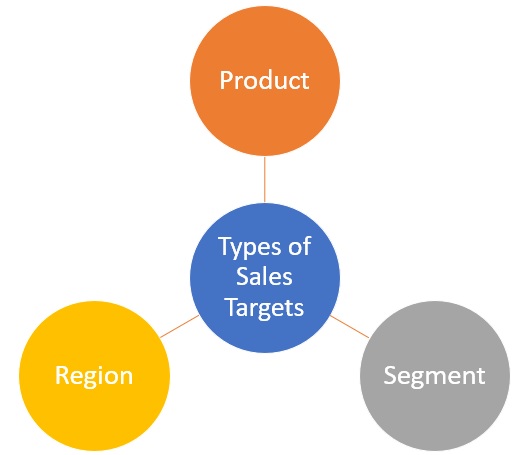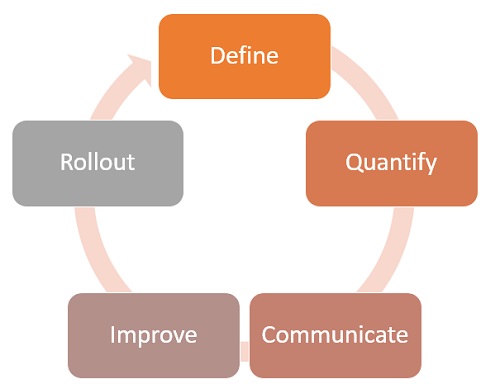- Business Concepts ›
- Marketing and Strategy ›
- Sales Target
Sales Target
Definition, Importance, Types, Steps & Example
This article covers meaning & overview of Sales Target from marketing perspective.
What is meant by Sales Target?
Sales target is a company-specified amount of sales in terms of units or volume that is set as a target for a sales team or a sales person in order to achieve or exceed within a time period like month, quarter or year. Sales targets should be defined through proper analysis and should be realistic and attainable for the sales team given the market trends and conditions. These should be driven by the overall organizational goals and strategic objectives.
Sales targets are apportioned among various units of sales like salespersons, distributors, franchisees, agents etc.
Importance of Sales Target
A sales target acts as a goal for a sales person or a team which is in sync with the overall organization guidance and strategy. If an organization wants to achieve a particular revenue target for a quarter or an year, they need to actually sell the goods and services worth that amount. The sales team takes the onus of actually closing the deals in the market and converting them into orders worth dollar values.
The targets are set keeping in mind the overall revenue targets. These targets are divided among teams and individuals so that they are achievable.
A sales team if given a target of 1 billion dollar a year may not be able to achieve it as a whole. But if these targets are divided smartly among the different sales teams by product, market segments and regions, then the overall target would become achievable.
Types of Sales Target
There are different kinds of Sales Targets:
By Product
Product sales targets are generally a list of the number of products one needs to sell, at a specified average price in order to earn a budgeted profit. It also keeps in mind business information such as inventory and warehousing.
Companies might be selling multiple variants and types of products. The sales target can be defined per product line.
By Market Segments
The Pareto principle says, “80% of a company’s profits are generally derived from 20% of the company’s customers”. Market segmentation is an important parameter on which the sales targets by market segments are set. A market is often segmented on the basis of geography, demographics (age, gender, income, occupation, education, socio-economic status) and psychographics (personality, lifestyle, attitude, value system).

By Region
Businesses spread over regions/ areas set sales targets for their Area Sales Managers for a given region/ area. This is an effective method of setting sales targets for businesses as it shaves off the daily headaches of setting and monitoring individual targets for a large number of products. These are ‘big picture’ targets as they cover a large number of customers.
Steps for Defining Sales Target
Setting a sales target is a process which needs to be followed thoroughly.
There are various steps in the same:
1. Start with defining the type of Sales Target
It can be either by product, segment or geography. A company can also follow a hybrid approach like sales volume of 1000 units in northern US region. It should be aligned with the overall strategy. If a company is trying to increase sales in a region in a country then sales target should be in sync.
2. Quantify Sales target
Sales target has to be properly defined to the sales team in terms of dollar value or the number of units to be sold. This number should be calculated from the profit margin expected by the company for that particular group or product line.

3. Communicate the Sales Target to team
The sales target is not complete until it is not properly communicated and discussed with sales team or a group within the sales team. The sales team need to accept the sales target and/or understand them as they understand the market well and can provide useful feedback on feasibility of the targets.
4. Correct & improve Sales Target
After the feedback is received and agreed upon, the sales targets need to be modified. Refined targets would be in sync with the organization as well as sales team's feasibility.
5. Rollout the Sales targets
Once finalized, they should should be rolled out to the larger sales team and should be made official as the KPI (Key performance indicators) for the team. Sales reporting should align with the updated targets.
Sales Target Example
Let us assume an organization manufacturing and selling smartphones. It has a decent market share. It wants to increase its market share by selling more phones in the upcoming quarters. The sales targets would be defined so as to achieve this objective. If the total market potential is of 10000 phones then the target can be defined at around 1000 phones to be sold by the sales team. This 1000 units target can further be divided as per regions and products. For Example, the flagship brand can have a sales target of 300 units per quarter and the sales target for a region like Texas can be defined at 400 units.
Hence, this concludes the definition of Sales Target along with its overview.
This article has been researched & authored by the Business Concepts Team which comprises of MBA students, management professionals, and industry experts. It has been reviewed & published by the MBA Skool Team. The content on MBA Skool has been created for educational & academic purpose only.
Browse the definition and meaning of more similar terms. The Management Dictionary covers over 1800 business concepts from 5 categories.
Continue Reading:
What is MBA Skool?About Us
MBA Skool is a Knowledge Resource for Management Students, Aspirants & Professionals.
Business Courses
Quizzes & Skills
Quizzes test your expertise in business and Skill tests evaluate your management traits
Related Content
All Business Sections
Write for Us